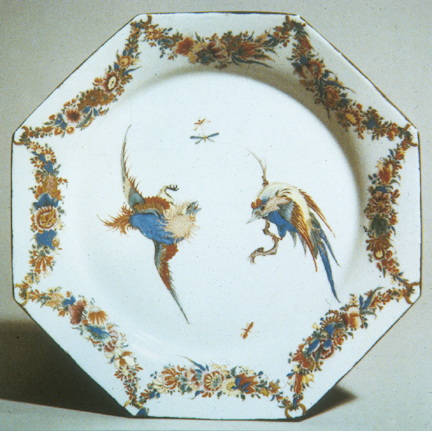Unlike French porcelain from Sèvres and German porcelain from Meissen, British porcelain was, for the most part, not produced under royal license or financial backing. A variation on porcelain formulation called 'bone china' was first produced in Britain at Bow. Thomas Frye and Edward Heylyn of Bow were awarded the patent for its production in 1744. Bone China is a medium temperature porcelain body with is made from a mixture of kaolin (china clay), feldspar, and bone ash. It is fired at a higher temperature than the soft paste porcelain of Sèvres, but a bit lower than the hard paste porcelain of Meissen. Bow was very successful and produced large quantities of bone china for the local British market as well as exporting a good portion of its output to the Americas. The advent of the American Revolutionary War of course put a stop to that.
Much of Bow's production was in clear imitation of Asian porcelain, and in fact, Bow became so associated with this style that it was often referred to as 'New Canton.' This plate is representative of Bow bone china. Note the obvious hallmarks of the Kakiemon style: the 4 color palette of red, blue, yellow, and green, the large amount of negative space, the two birds (phoenixes here, perhaps fighting rather than courting), the octagonal shape, and the brown rim.

Octagonal Plate, Bone China, Bow, English 1760 CE


